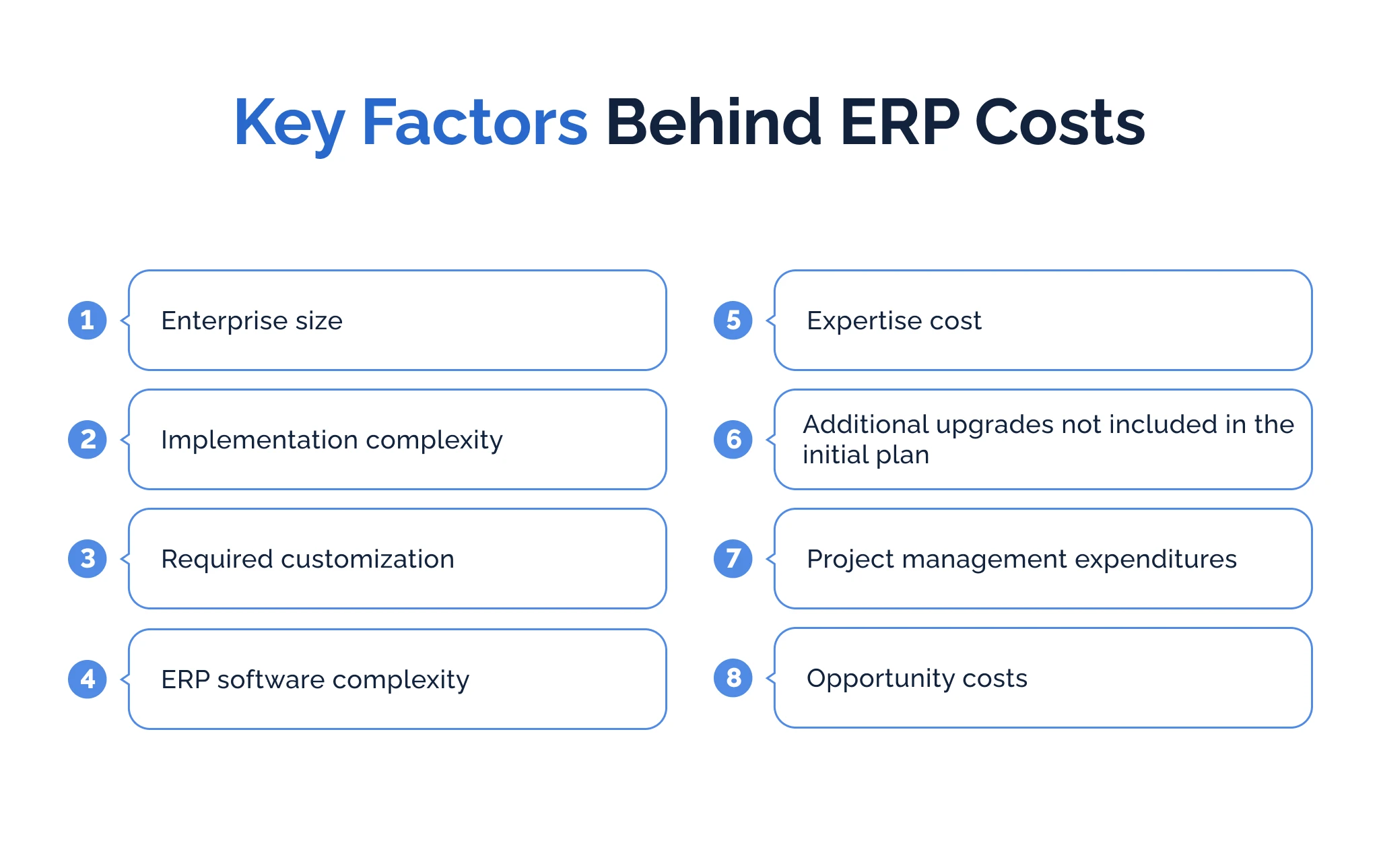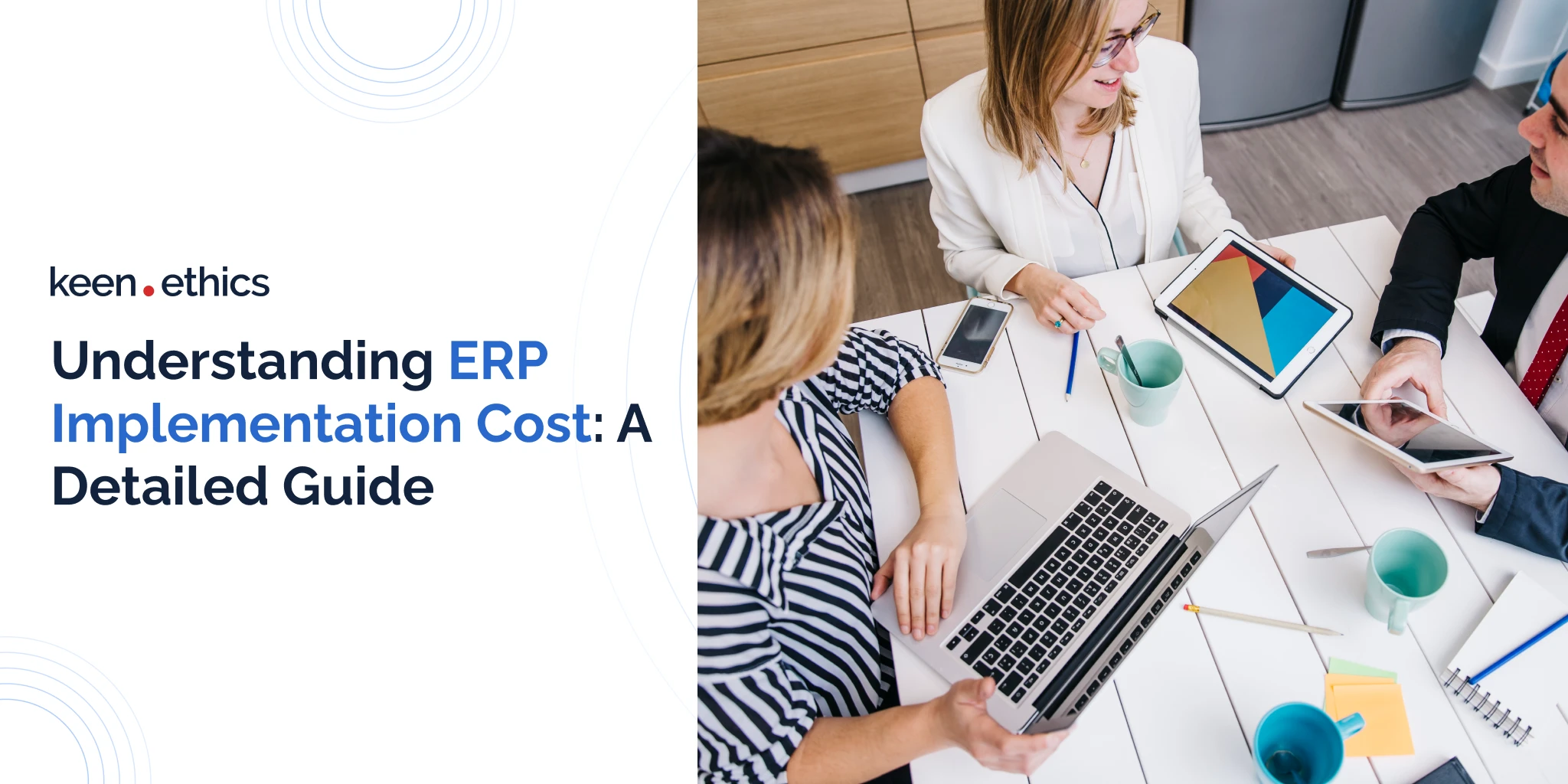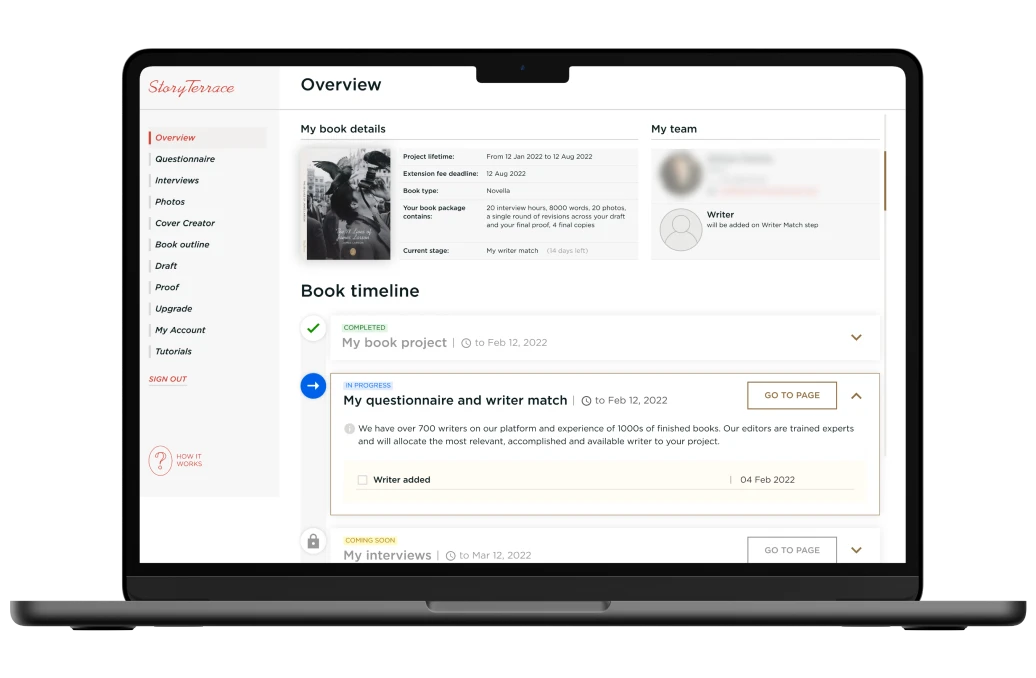ERP implementation costs are a complex topic. This article will help you navigate it!
Many companies are investing in ERPs these days. The reason for investments into software for the manufacturing industry is simple: they represent perfect tools for planning all key company-related activities. What prevents various businesses from going into this sector is ERP implementation cost. In numerous instances, the relevant businesses are unsure how much money the full-scale implementation process will require. The main goal of this article is to help the readers understand what cost components modern ERP implementation involves.
Why Are ERPs a Strong Investment?
In our opinion, ERPs are among the best investments for any business, regardless of the additional costs they involve. What’s the reason for this claim? Our experience shows that many businesses lose significant amounts of funds in management. For example, an inability to share data about available resources between departments often leads to problems with asset delivery. Pen and paper systems are chaotic and require large groups of managers to function well. An ERP is a solution to this challenge that allows one to lower the likelihood of errors in accounting and other resource-oriented tasks. The only payment for this comfort comes in the form of software cost. Ultimately, we believe it pays off in the majority of cases. ERPs are an investment rather than some form of liability for most companies. Investopedia offers a very good set of case analyses that clearly outline what benefits an average company can get from ERPs. As you can see, their scope is tremendous as they get an opportunity to improve payroll management and the sharing of information between different departments.
What Cost Structure Does ERP Implementation Have?

ERP implementation has a clear cost structure that involves several core elements. Here they’re:
1. Software license payment
The most important cost for ERP implementation comes in the form of software license payments. The existing solutions for ERP on the market require major human resources for development. Consequently, various companies working in this sector want to receive compensation for infrastructure cost. In this respect, the fees on the market are significant. One of the leading solutions, Oracle ERP, can cost 625 dollars per worker monthly. This means a 5-year contract with a 1000-worker enterprise will amount to approximately 3 million dollars. Obviously, there are cheaper and even costlier solutions. Nonetheless, a high-quality ERP is likely to require thousands, if not tens of thousands of dollars, per year even for smaller businesses. In our opinion, those costs are easily covered by the benefits of implementing the tools. Nonetheless, one should be prepared to bear them.
2. Implementation costs
Another major aspect is ERP implementation cost. ERPs represent sophisticated software that requires a lot of effort for implementation. What are some core actions one has to consider? For example, if you want to ensure proper inventory management in your firm, an ERP tool has to be installed on the majority of computers and even mobile devices. More importantly, you have to create a clear set of configurations for these tools. One must put in the information about the financial state of a company, its core assets, and the existing management hierarchy. Without such information, an ERP is unlikely to work as efficiently as possible.
The problem is that the provision of all this information is highly time-consuming. You have to hire a big team of implementation specialists to ensure the adequate transition of all the core information. Consequently, you should be prepared to invest major funds into this aspect of development if you’re implementing an ERP. What costs should one expect? In the case of ERPs like Oracle, for instance, the costs may be included in the fees for licensing. Nonetheless, you’ll have to do a lot of internal training that greatly depends on the scope of your business.
3. Infrastructure investments
A major characteristic of an ERP is that it’s a software solution. Every software solution requires high-quality hardware to work well. In this regard, the infrastructure costs that your firm may encounter during the implementation process can be significant. Firstly, you’ll have to invest in a clear set of servers to maintain the main functions of the ERP apps. These servers will act as the core element of your system, being a central hub for all requests. Secondly, you should also have personal hardware that can work with ERPs. In this respect, one should invest in office PCs that can handle the system demands presented by various software vendors, such as Odoo or Microsoft. In short, a business that doesn’t rely on personal computers in the first place is likely to encounter tremendous cost demands if it wants to implement an ERP system. Even though the majority of companies are using personal computers these days, it’s still necessary to remember that ERP implementation can fail if you don’t have a sufficiently prepared hardware infrastructure.
4. Maintenance
The cost of ownership for ERP systems also includes the expenditures on their maintenance. You have to actively review this factor because ERP software can encounter bugs or change significantly after certain updates. It also requires business owners to actively update information and redo various calculations. All these aspects are a part of the actual costs incurred by involved companies. Today, these costs are typically included in subscriptions made by ERP producers. Nonetheless, some relevant problems with ERPs can be on your side. For instance, you may encounter issues with server configuration. A person needs a well-prepared team of specialists to adequately deal with this type of challenge. Thus, ERP implementation costs, in our opinion, also involve investments in IT teams capable of resolving challenges encountered during the daily usage of an app.
5. Other costs
There are also additional ERP implementation cost elements, which are typically not discussed on the Internet. What are some of those hidden costs? Firstly, an issue of worker adaptation is present. An ERP is likely to create initial disorganization in your firm, requiring time for adjustment to a novel technology. Secondly, ERP can make your vision of business processes more complex. As a result, it can force the company to invest more in sectors they didn’t consider prior. Lastly, hidden expenditures may also involve the opportunity costs that appear after the rise of new frameworks on the market. At some point, you can encounter a situation in which an alternative solution would offer a better approach to managing enterprise resources. Nonetheless, the investments already made into the presented software can create a sunk cost fallacy and force you to dedicate funds to an inefficient solution even further. Hence, the presented solution may create some long-term problems for the relevant firms if they’re not careful about change management.
Current Pricing Models for ERP

Modern ERPs have a clear set of pricing models one should think about. Here they’re:
1. One-time license
Some ERP companies are offering one-time licenses to their customers. This means that they can purchase Enterprise Resource Planning software once and then avoid any further payments. This is a model that is, for example, used by Reflex ERP, which provides a perpetual license to its customers as an alternative to subscriptions. The approach may seem advantageous to some readers, but it has major downsides in reality. Yes, on the one hand, ERP solutions following this model may appear cheaper and genuinely don’t require any further investments for purchasing. On the other hand, however, they may involve weaker support and, more importantly, the risk of withdrawn maintenance. For instance, if your ERP provider fails, there will no longer be any updates to their app. Consequently, one large upfront payment may be economically unviable, considering the rising security threats on the market. You’ll also have to fully pay for the implementation process, which typically isn’t a part of the operational expenses for such apps.
2. SaaS/Subscription-based model
More and more businesses understand the problems of the approaches outlined above and, hence, offer more complete packages for their customers. How do they do this? Instead of providing one-time purchases, those companies give their software on a subscription basis. Why is this so vital? Firstly, subscriptions are a perfect way to pay for advanced customer service. Subscription ERPs are notable for their major investments in helping customers with implementation. The largest firms in the market can even send their specialists to you to help with implementation. Benefits don’t stop at the implementation phase. Secondly, SaaS approaches are also noteworthy for the long-term maintenance of your ERP apps. You can receive support at any moment, as subscription fees typically cover the costs of hiring support specialists. Lastly, the likelihood of losing access to such apps is much lower. Subscriptions are costlier, but they cover long-term maintenance better than other models.
Key Factors Behind ERP Costs

1. Enterprise size
The first factor that has a major impact on the cost of cloud-based ERP solutions is undoubtedly enterprise size. In this respect, the cost of a typical ERP solution varies with the scope of your firm. As mentioned before, for example, companies like Oracle want more than 600 dollars per worker annually. Solutions for smaller firms can be cheaper, but the overall trend is clear: the bigger your firm is, the more you’ll have to pay. Even if your goal is to organize warehouse management, the relevant costs are still likely to involve the entire business rather than this factor alone.
2. Implementation complexity
Different firms on the market are likely to face different challenges during the implementation process of an ERP. On the one hand, companies that already have well-prepared inventory management and numerous well-configured personal computers connected through servers won’t need any careful planning or implementation due to possessing the necessary infrastructure from the onset. On the other hand, businesses that aren’t digitalized well are likely to encounter significant costs due to having to install additional hardware and software. The scope of the information analyzed by a resource-planning system is also likely to be a part of ERP implementation cost. Consequently, you should review the scope of the tasks you want to solve while working with implementation complexity.
3. Required customization
Some firms work in sectors with very specific requirements for item and cost tracking. For example, if you need to track a tremendous number of small products (for instance, minor parts for cars), the cost factors for implementing an ERP can change significantly. Why is this the case? There may be a need for additional hardware costs to enable many minor calculations. More importantly, some custom add-ons for your app will also be necessary to create new functions. In this light, we believe that customization costs are among the fees that are, regrettably, often ignored by businesses in the ERP software sector.
4. ERP software complexity
Different solutions on the market have different cost structures for their customers. A smaller app such as Reflex ERP may typically cost less and even offer a perpetual license model. A larger app like Oracle ERP is likely to require much larger investments. In general, the rule of thumb is that a cloud-based solution is more costly than the one that is self-hosted. The scope of functions matters too: an app optimized for big enterprises will require much greater costs than an app aimed at smaller companies. Hence, cost management also depends on the app you choose. Smaller businesses, in our opinion, shouldn’t invest in solutions for large ones despite their functions. The only reason to do so is if you expect a major opportunity to scale.
5. Expertise cost

All ERP software requires expertise to function well. In this respect, a core ongoing cost is undoubtedly represented by the price of hiring experts. Why do you need experts for an ERP? There are two reasons for hiring those individuals. Firstly, they are necessary for implementation and maintenance. You should have a clear set of specialists for managing the technological aspects of your app. Secondly, an expert may be necessary from a more strategic standpoint. It’s not enough to have a high-quality app to create an accurate budget. One should also actively think about the methods of collecting information and processing it. If you input low-quality information into a powerful ERP, it won’t suddenly start producing high-quality output. Hence, firm owners must also invest in experts who can assist them with strategic data collection and processing.
6. Additional upgrades not included in the initial plan
Many ERP companies are offering additional functionality to their customers. For instance, you can invest in a financial module that will help you plan business finances in the long-term scenarios. We’ve already mentioned that the original functions of an ERP app may be insufficient. Hence, an investment in custom features or experts may be necessary. In some situations, those additional features are offered by the vendors themselves. Our recommendation here is simple: actively review your business needs to prevent situations in which you have to incur unexpected costs.
7. Project management expenditures
ERP software is highly complex. One needs major expertise to use it properly. In this regard, you’re likely to encounter various project management expenditures. This ERP implementation cost may come in many forms. Above all, there may be a need to hire a team of project managers with specific expertise concerning a particular ERP. Different systems have different skill requirements for the relevant users. Another vital element is the cost of training. You’ll need managers who can explain how to use an ERP and then oversee the everyday usage of those systems. Thus, major workforce expenditures are also a part of the costs encountered by ERPs.
8. Opportunity costs
Opportunity cost in economics is the potential cost of not using a different system for your goals. In this respect, you can encounter two types of opportunity costs with ERPs. The first one comes in the form of price and functionality differences between diverging ERPs. The second one may stem from the divergences between different manufacturing and business operation industries. For example, an implementation of separate frameworks for inventory management and financial operations may be sufficient for your company goals. Consequently, we recommend performing a thorough economic analysis before choosing what type of ERP you want to install. Sometimes, these solutions aren’t necessary for the relevant firms.
Reducing ERP Costs: 5 Tips

There are multiple ways to lower the costs of ERP integration. Let’s review them:
1. Negotiate with vendors
Many vendors sell solutions that can cost tens of thousands and sometimes even millions of dollars. In this light, they may be willing to negotiate with you. A large contract is likely to be highly profitable even with a big discount. For instance, the customers of Oracle, according to their website, can get discounts of up to 40% for some solutions. Therefore, we recommend talking to vendors and asking for alternative solutions if you want to set up advanced ERP servers.
2. Thoroughly review large contracts
Another practice we recommend for most partners is to thoroughly review major contracts. Why is this the case? In many situations, the vendors try to sell features that you may not need. For example, they can promote a financial or accounting module even though your core focus is on inventory management. As a result, a non-thorough approach to ERP negotiations can easily end up in the purchase of unnecessary functions. Actively review what services you require: this can often lead to major cost cuts.
3. Think about external resources
Many additional modules offered by the ERP companies aren’t as robust as the full-scale solutions provided on the market. Thus, we recommend calculating various opportunity costs before deciding to purchase this or that module. Sometimes, it’s cheaper to create an integration module or do some calculations manually. Hence, it’s a good idea to create thorough estimates with the help of business experts.
4. Don’t customize too much
The benefits of customization offer diminishing returns with the scope of changes. Why is this the case? Firstly, some optimizations are simply minor: they will yield you no more than a thousand or two dollars, despite investments that exceed this figure ten times. Secondly, investments into customization make your software too specialized. Various conditions in businesses change all the time. This means you can easily encounter situations in which your existing solutions no longer fit the changing conditions. Therefore, a good way to reduce ERP software implementation cost is to avoid excessive investments in specialization. Try to work with resources you have: after adaptation time, they’re highly likely to function well.
5. Clearly outline the features you want to see
In the end, we would like to summarize this section by outlining the core aspect of the advice offered here. What does it ultimately imply? The answer is simple: you should clearly outline the features you want to see in your ERP. Don’t go into ERP implementation blindly. Focus on understanding your needs first and only then implement the core features. This will help you avoid feature creep and situations in which vendors try to sell solutions that have many unnecessary functions.
Conclusion

To summarize, the costs of implementing ERPs are significant these days. More importantly, the upfront costs of purchasing an ERP solution are often much lower than what you can typically expect from a fully implemented one. Consequently, we recommend actively focusing on planning while installing an ERP solution. Ultimately, a strong framework may require a combination of existing capabilities and active customization. If you need help with implementing an ERP in your business or even creating a custom one, don’t hesitate to address our company for estimates. We know how to perform high-quality ERP software development.
Address Keenethics to learn this information.












